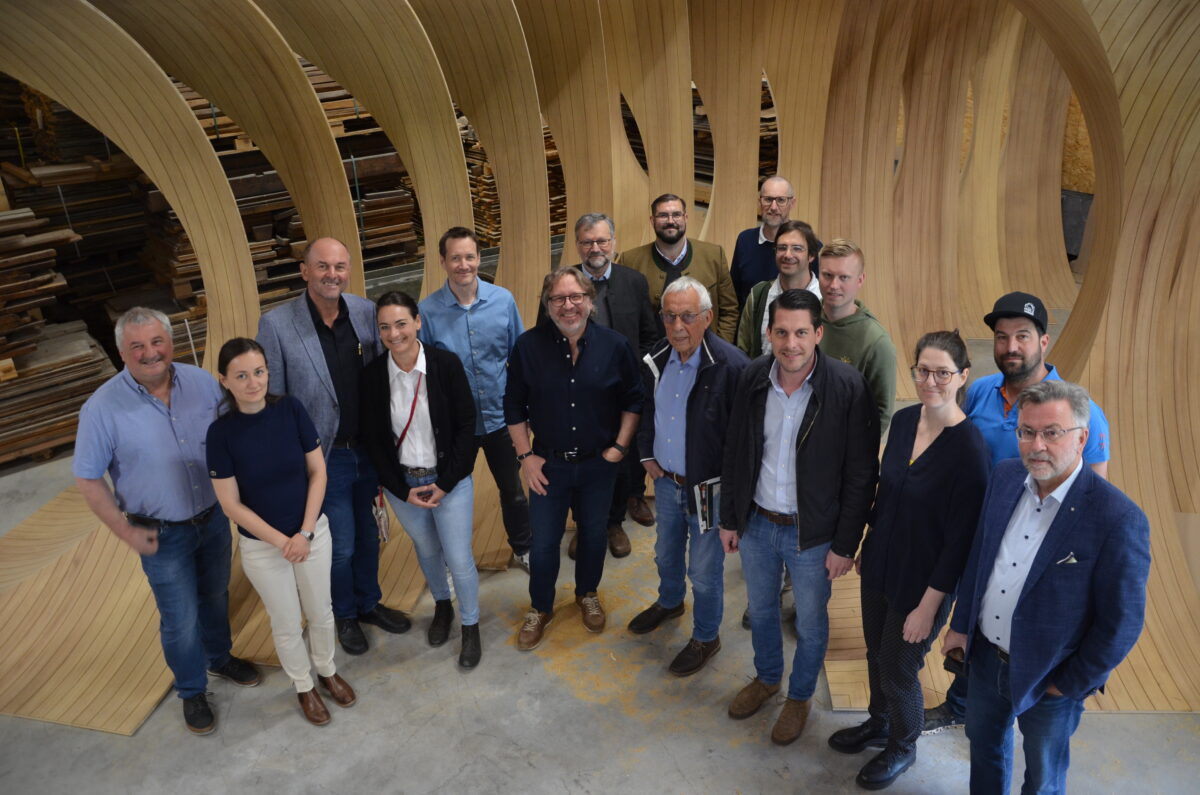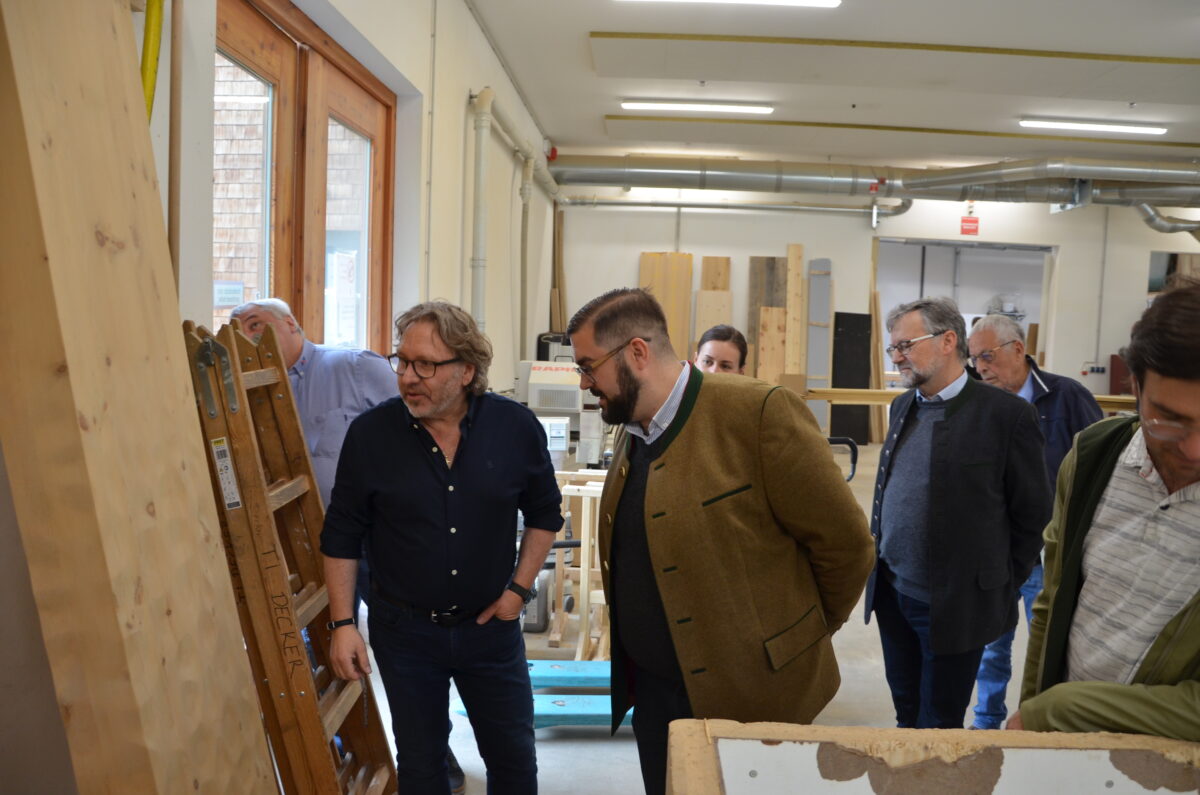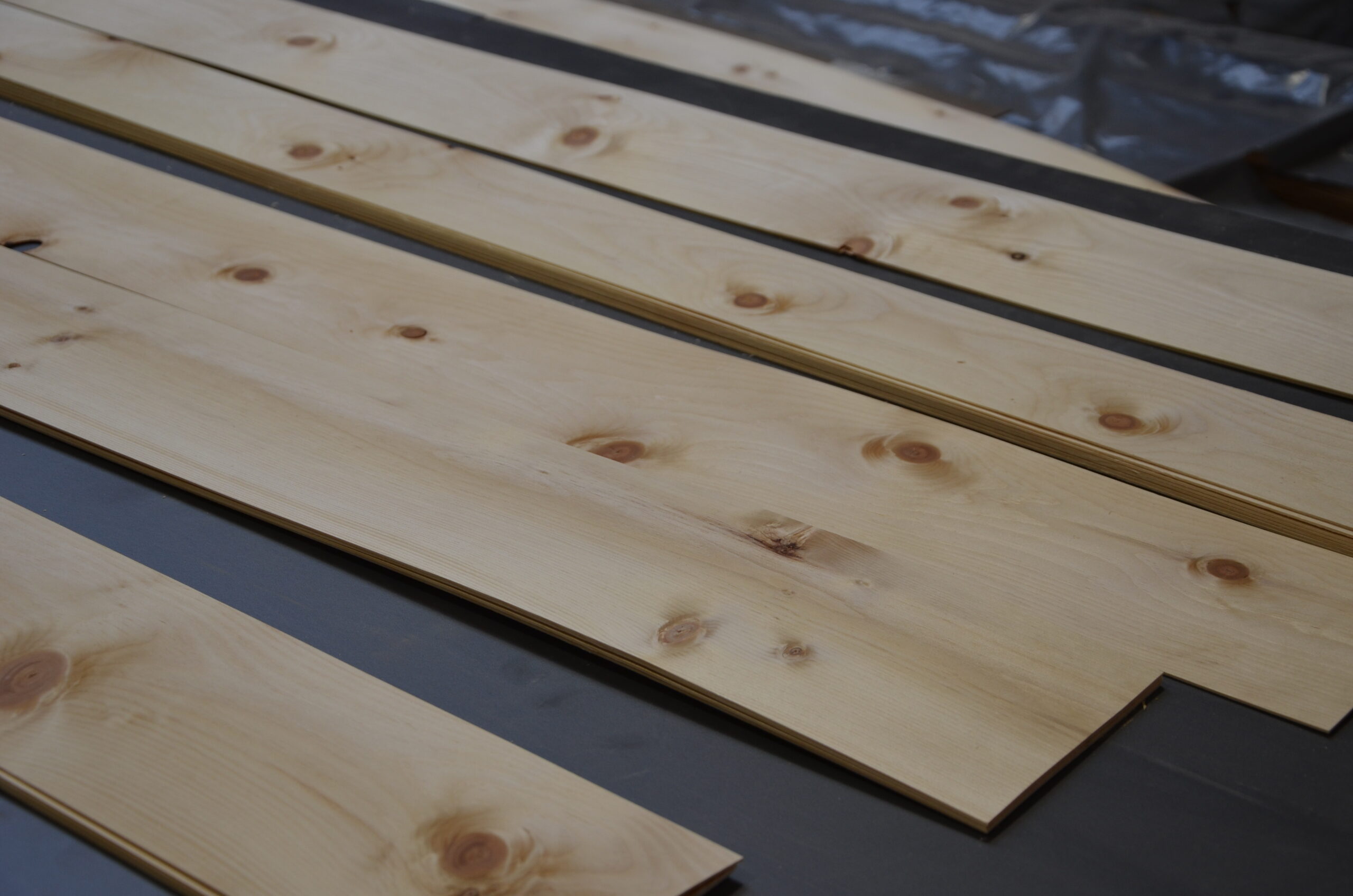For more than twenty years, stone pine has been trending, but where does it stand today, and what might its future look like? These and other questions were discussed by representatives of the forest-wood value chain during a workshop held in April at the Decker joinery in Itter, Tyrol. The event was organized by proHolz Tirol as part of the “Bioeconomy Austria” project.
At the beginning, participants (mainly providers from the Stone Pine Network) were given a tour of the innovative company by host Markus Decker. The subsequent workshop focused on customer needs, challenges, opportunities, and ideas related to this type of wood. Stone pine is a prime example of the high-value use of wood – a topic currently addressed by proHolz Tirol in the “Bioeconomy Austria” project. In the 1990s, it was almost forgotten, but targeted marketing efforts and storytelling brought new awareness to the “Queen of the Alps.” Since then, the trend has remained unbroken, and demand continues at a high level. Its color, grain, and scent make stone pine a wood with character. It is known for its resilience and grows on alpine ridges and rocky slopes. This tree species is found throughout the Alpine region, with nearly half of the Alpine stone pine population located in Tyrol. Austria’s legally mandated sustainable forestry ensures that no more stone pine is harvested than can regrow – a factor that also contributes to its popularity.



